Abstract
OBJECTIVES: An independent and updated historical cohort mortality study was conducted among chemical plant workers to investigate further an association between exposures to formaldehyde and particulates and cancers of the nasopharynx and lung reported in an earlier National Cancer Institute study of the same plant. METHODS: Subjects were 7359 workers who were first employed between 1941 and 1984 in a factory in Wallingford, Connecticut where formaldehyde was used. Vital status was determined on 31 December 1984 for 96% of the cohort and death certificates were obtained for 93% of 1531 known deaths. Exposures of individual workers were estimated quantitatively for formaldehyde, product particulates, and non-product particulates, and qualitatively for pigment. Statistical analyses focused on 6039 white men in 1945-84. Cohort data that could not have been included in the National Cancer Institute study were also analysed separately. RESULTS: Mortality among long term workers (employed > or = 1 y) was generally similar to or more favourable than that of the general population, and there was little evidence of a relation between either rates of lung cancer or standardised mortality ratios (SMRs) and several measures of exposure to formaldehyde, particulates, and pigment. For several causes including lung cancer, death rates among short term workers (employed < 1 y) were significantly increased. Short term workers did not seem to differ from long term workers for the exposures considered. Among all white men, a significant SMR of 550 (local comparison) for nasopharyngeal cancer (NPC) was based on the same four index cases identified in the earlier study of this plant. Only one case of nasopharyngeal cancer had any appreciable exposure to formaldehyde. No new cases of nasopharyngeal cancers were found among the cohort data that could not have been included in the National Cancer Institute study--that is, extended observation time and additional study members. CONCLUSIONS: Among workers employed for at least one year, this study provides little evidence that the risk of lung cancer is associated with exposure to formaldehyde alone or in combination with particulates or pigment. The significant increases in both the rates and SMRs for lung cancer seem to be primarily a phenomenon of short term workers, but the possibility remains that unmeasured occupational or non-occupational factors may have played a part.
Full text
PDF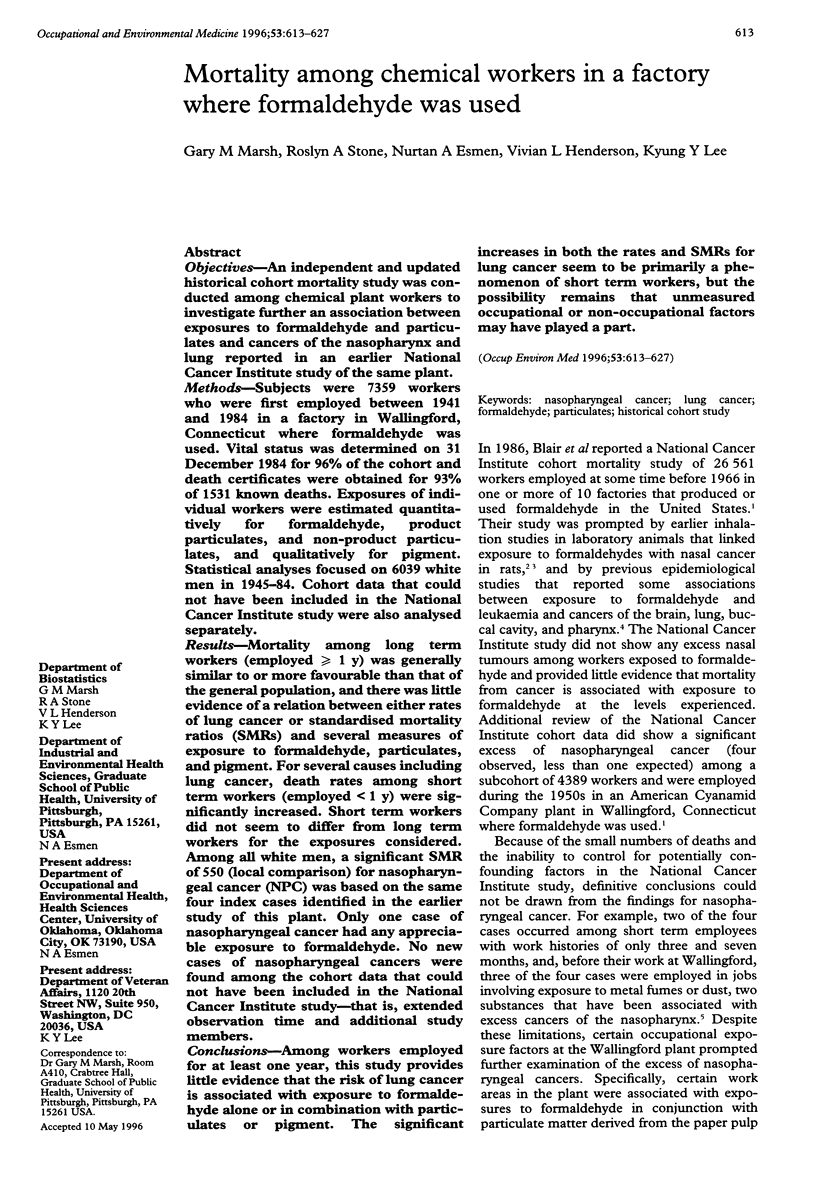
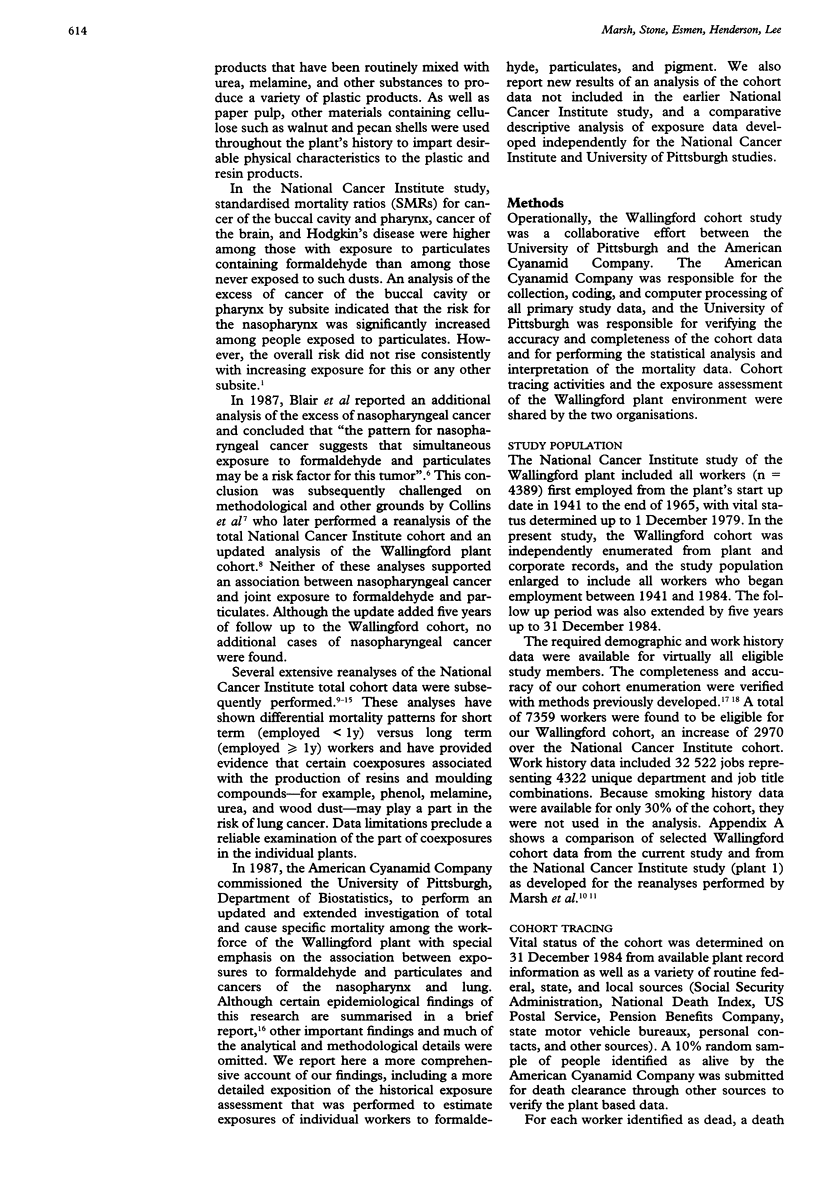
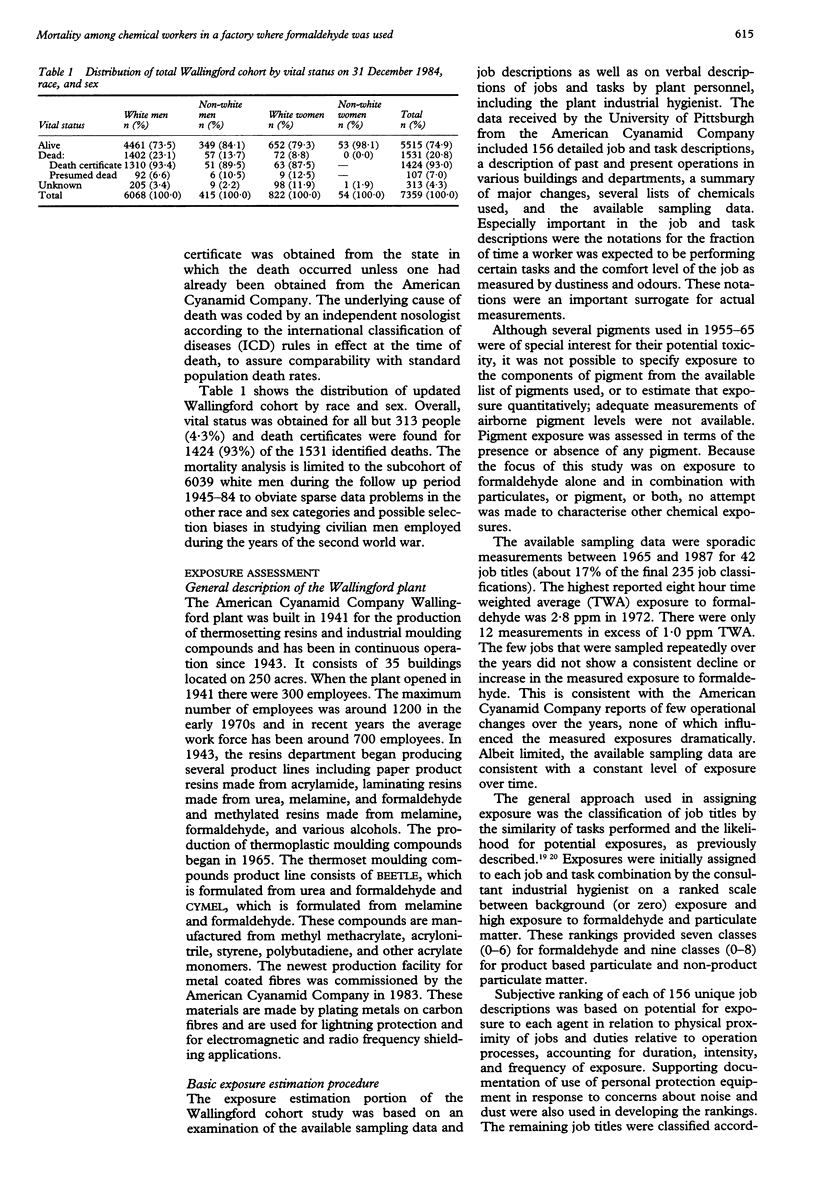
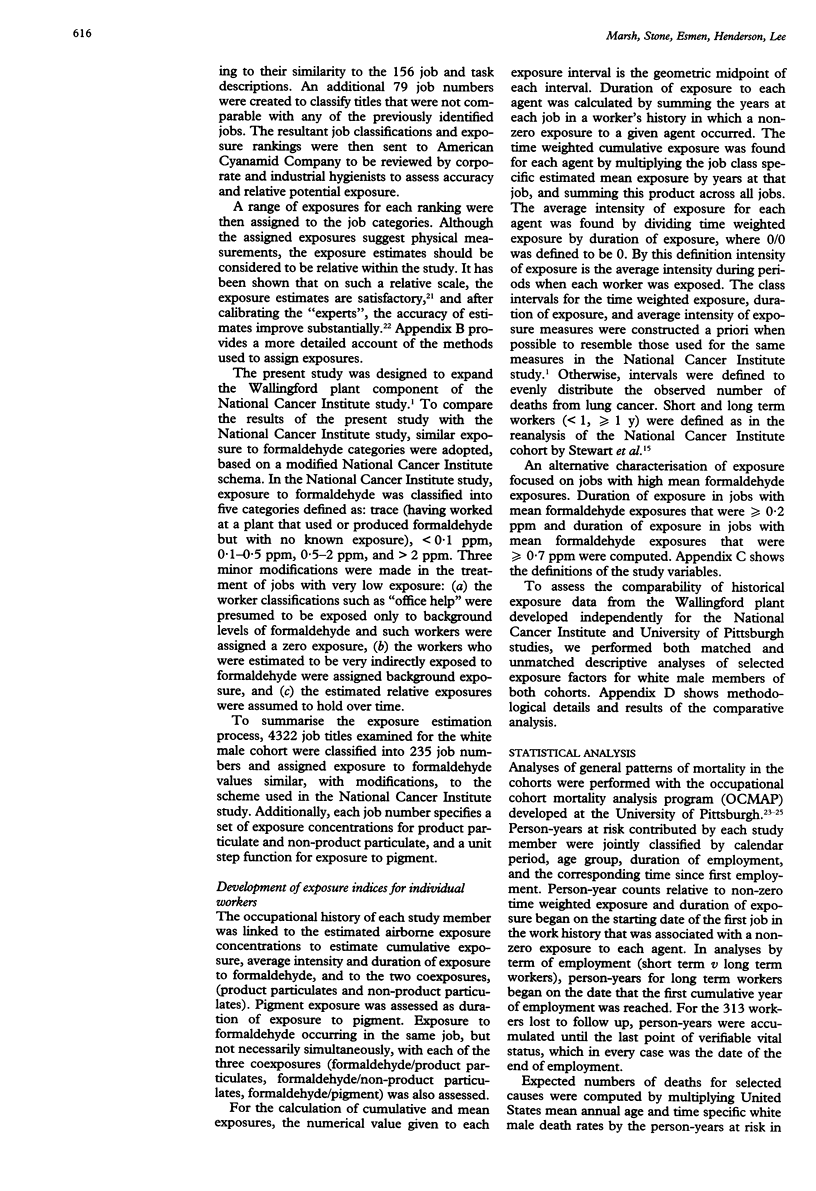

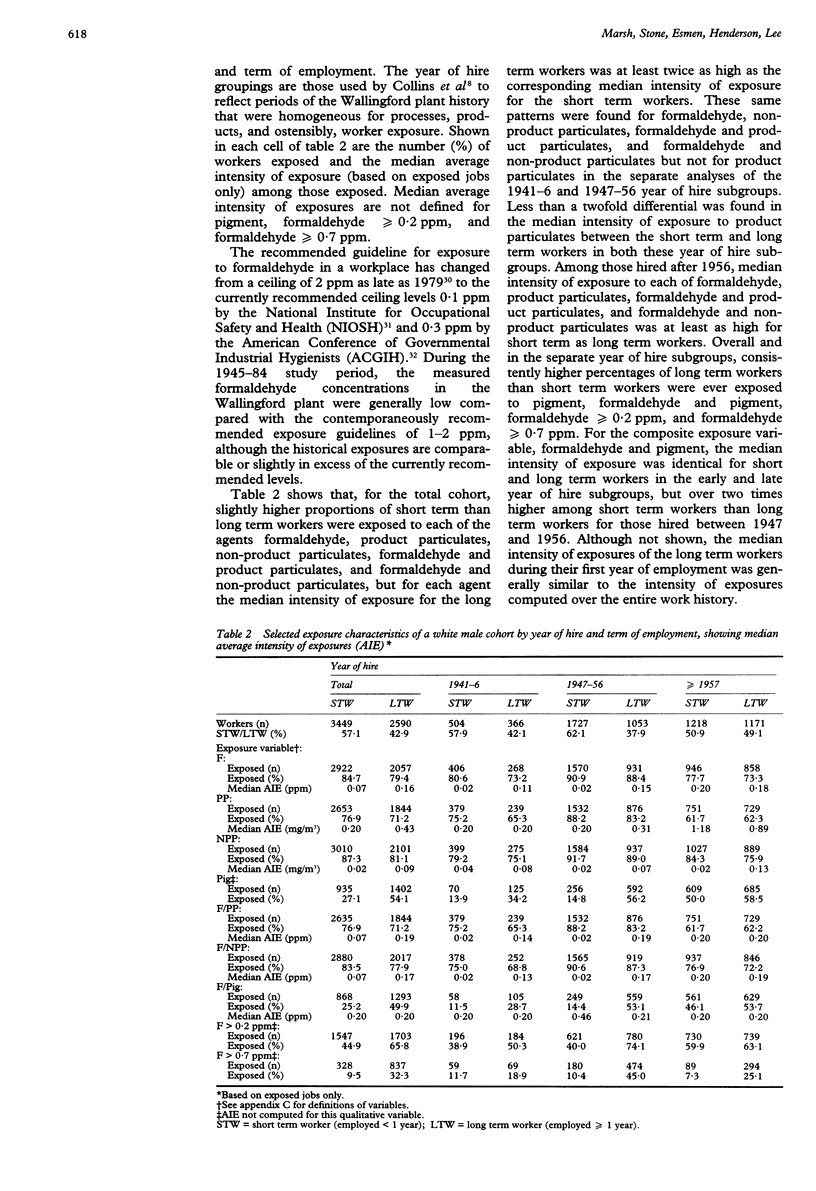


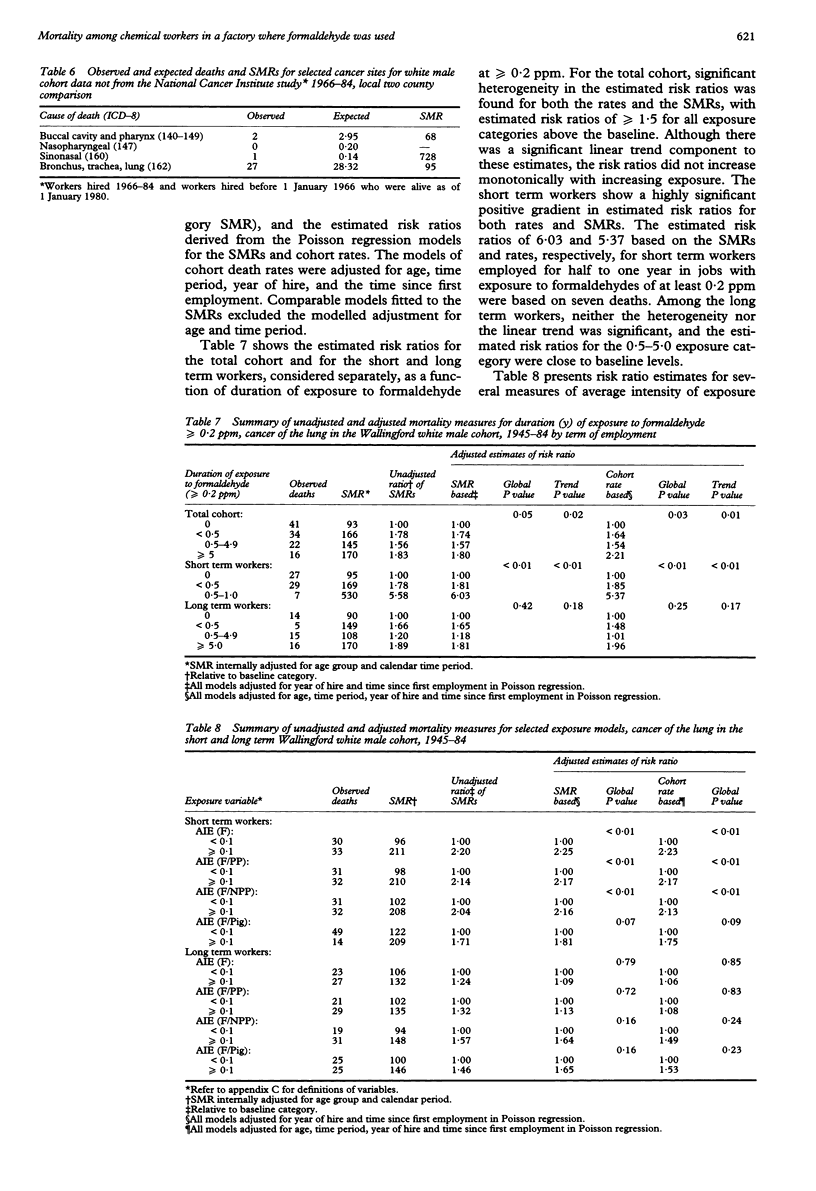
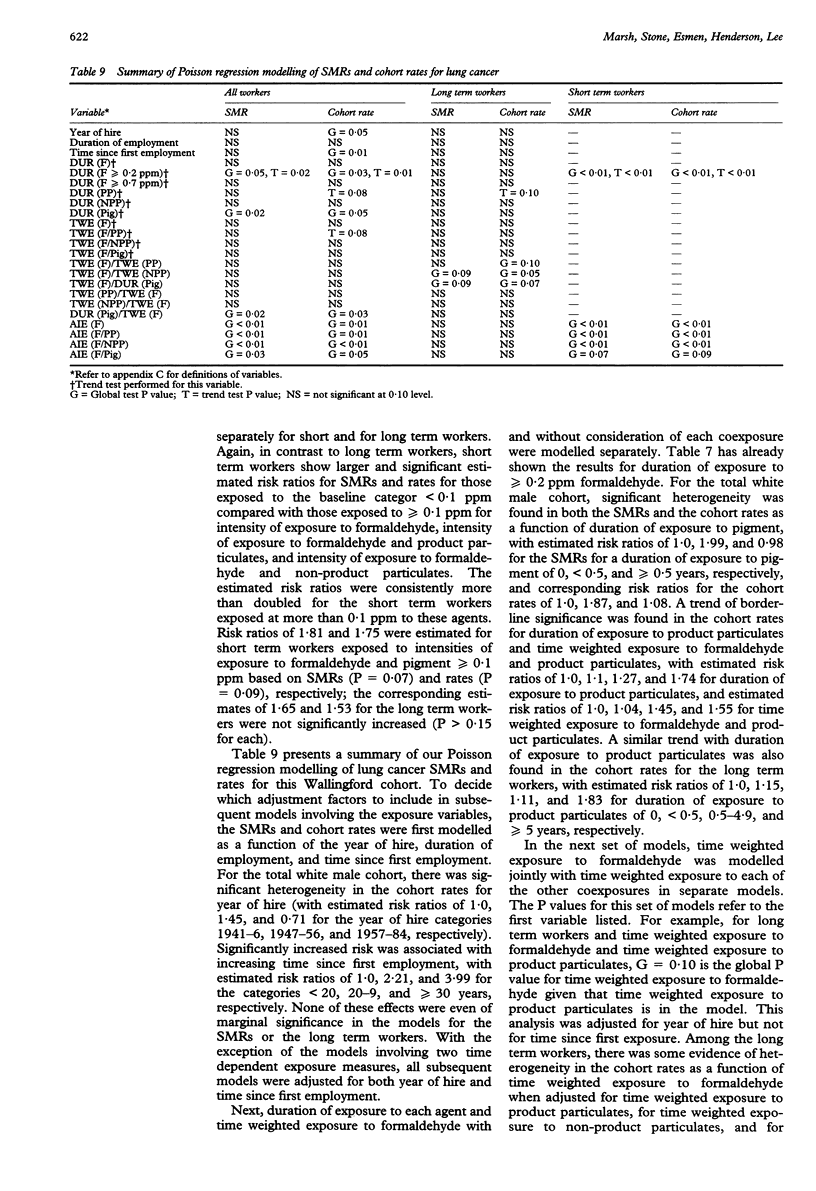


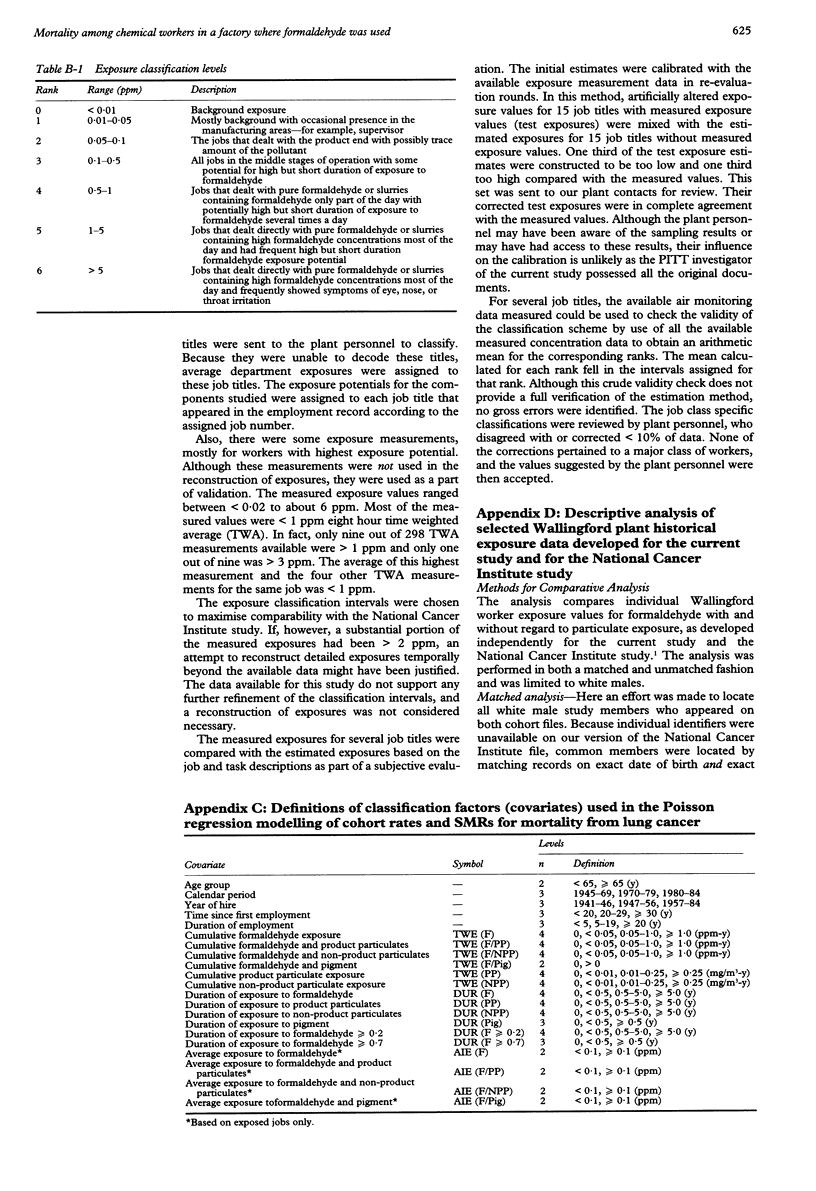
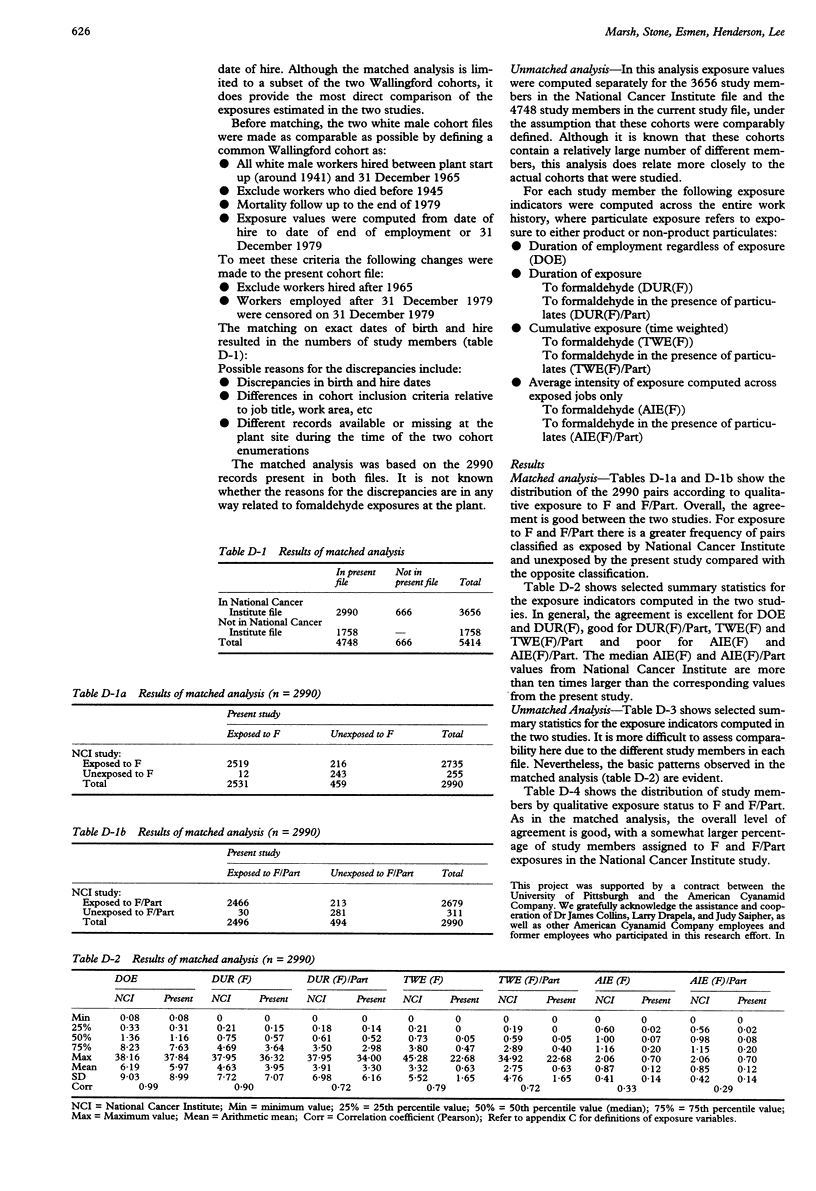
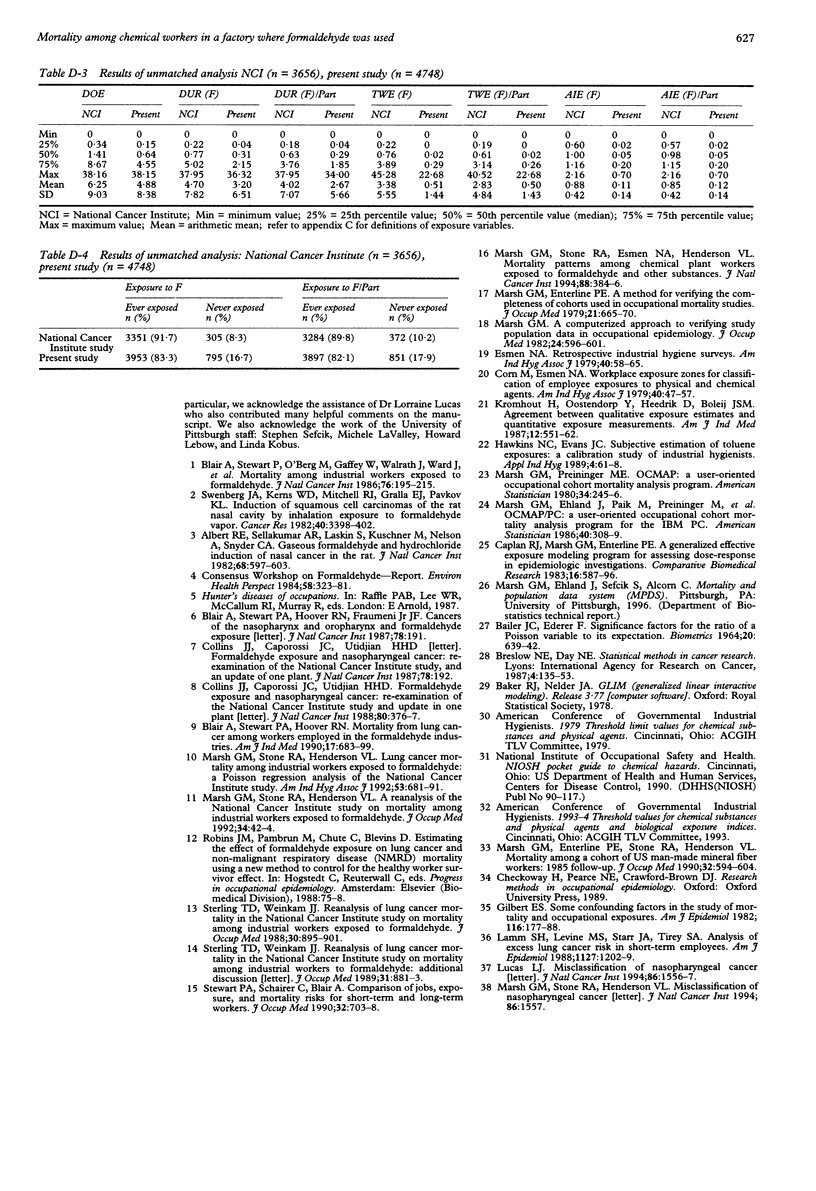
Selected References
These references are in PubMed. This may not be the complete list of references from this article.
- Albert R. E., Sellakumar A. R., Laskin S., Kuschner M., Nelson N., Snyder C. A. Gaseous formaldehyde and hydrogen chloride induction of nasal cancer in the rat. J Natl Cancer Inst. 1982 Apr;68(4):597–603. [PubMed] [Google Scholar]
- Blair A., Stewart P. A., Hoover R. N., Fraumeni J. F., Jr, Walrath J., O'Berg M., Gaffey W. Cancers of the nasopharynx and oropharynx and formaldehyde exposure. J Natl Cancer Inst. 1987 Jan;78(1):191–193. doi: 10.1093/jnci/78.1.191. [DOI] [PubMed] [Google Scholar]
- Blair A., Stewart P. A., Hoover R. N. Mortality from lung cancer among workers employed in formaldehyde industries. Am J Ind Med. 1990;17(6):683–699. doi: 10.1002/ajim.4700170604. [DOI] [PubMed] [Google Scholar]
- Caplan R. J., Marsh G. M., Enterline P. E. A generalized effective exposure modeling program for assessing dose-response in epidemiologic investigations. Comput Biomed Res. 1983 Dec;16(6):587–596. doi: 10.1016/0010-4809(83)90044-7. [DOI] [PubMed] [Google Scholar]
- Collins J. J., Caporossi J. C., Utidjian H. M. Formaldehyde exposure and nasopharyngeal cancer: re-examination of the National Cancer Institute Study and an update of one plant. J Natl Cancer Inst. 1988 May 4;80(5):376–377. doi: 10.1093/jnci/80.5.376. [DOI] [PubMed] [Google Scholar]
- Corn M., Esmen N. A. Workplace exposure zones for classification of employee exposures to physical and chemical agents. Am Ind Hyg Assoc J. 1979 Jan;40(1):47–57. doi: 10.1080/15298667991429318. [DOI] [PubMed] [Google Scholar]
- Esmen N. Retrospective industrial hygiene surveys. Am Ind Hyg Assoc J. 1979 Jan;40(1):58–65. doi: 10.1080/15298667991429327. [DOI] [PubMed] [Google Scholar]
- Gilbert E. S. Some confounding factors in the study of mortality and occupational exposures. Am J Epidemiol. 1982 Jul;116(1):177–188. doi: 10.1093/oxfordjournals.aje.a113392. [DOI] [PubMed] [Google Scholar]
- Kromhout H., Oostendorp Y., Heederik D., Boleij J. S. Agreement between qualitative exposure estimates and quantitative exposure measurements. Am J Ind Med. 1987;12(5):551–562. doi: 10.1002/ajim.4700120509. [DOI] [PubMed] [Google Scholar]
- Lamm S. H., Levine M. S., Starr J. A., Tirey S. L. Analysis of excess lung cancer risk in short-term employees. Am J Epidemiol. 1988 Jun;127(6):1202–1209. doi: 10.1093/oxfordjournals.aje.a114913. [DOI] [PubMed] [Google Scholar]
- Lucas L. J. Misclassification of nasopharyngeal cancer. J Natl Cancer Inst. 1994 Oct 19;86(20):1556–1558. doi: 10.1093/jnci/86.20.1556. [DOI] [PubMed] [Google Scholar]
- Marsh G. M. Computerized approach to verifying study population data in occupational epidemiology. J Occup Med. 1982 Aug;24(8):596–601. doi: 10.1097/00043764-198208000-00014. [DOI] [PubMed] [Google Scholar]
- Marsh G. M., Enterline P. E. A method for verifying the completeness of cohorts used in occupational mortality studies. J Occup Med. 1979 Oct;21(10):665–670. [PubMed] [Google Scholar]
- Marsh G. M., Enterline P. E., Stone R. A., Henderson V. L. Mortality among a cohort of US man-made mineral fiber workers: 1985 follow-up. J Occup Med. 1990 Jul;32(7):594–604. doi: 10.1097/00043764-199007000-00009. [DOI] [PubMed] [Google Scholar]
- Marsh G. M., Stone R. A., Esmen N. A., Henderson V. L. Mortality patterns among chemical plant workers exposed to formaldehyde and other substances. J Natl Cancer Inst. 1994 Mar 2;86(5):384–386. doi: 10.1093/jnci/86.5.384. [DOI] [PubMed] [Google Scholar]
- Marsh G. M., Stone R. A., Henderson V. L. A reanalysis of the National Cancer Institute study on lung cancer mortality among industrial workers exposed to formaldehyde. J Occup Med. 1992 Jan;34(1):42–44. [PubMed] [Google Scholar]
- Marsh G. M., Stone R. A., Henderson V. L. Lung cancer mortality among industrial workers exposed to formaldehyde: a Poisson regression analysis of the National Cancer Institute Study. Am Ind Hyg Assoc J. 1992 Nov;53(11):681–691. doi: 10.1080/15298669291360373. [DOI] [PubMed] [Google Scholar]
- Sterling T. D., Weinkam J. J. Reanalysis of lung cancer mortality in a National Cancer Institute study on mortality among industrial workers exposed to formaldehyde. J Occup Med. 1988 Nov;30(11):895–901. doi: 10.1097/00043764-198811000-00019. [DOI] [PubMed] [Google Scholar]
- Stewart P. A., Schairer C., Blair A. Comparison of jobs, exposures, and mortality risks for short-term and long-term workers. J Occup Med. 1990 Aug;32(8):703–708. [PubMed] [Google Scholar]
- Swenberg J. A., Kerns W. D., Mitchell R. I., Gralla E. J., Pavkov K. L. Induction of squamous cell carcinomas of the rat nasal cavity by inhalation exposure to formaldehyde vapor. Cancer Res. 1980 Sep;40(9):3398–3402. [PubMed] [Google Scholar]


